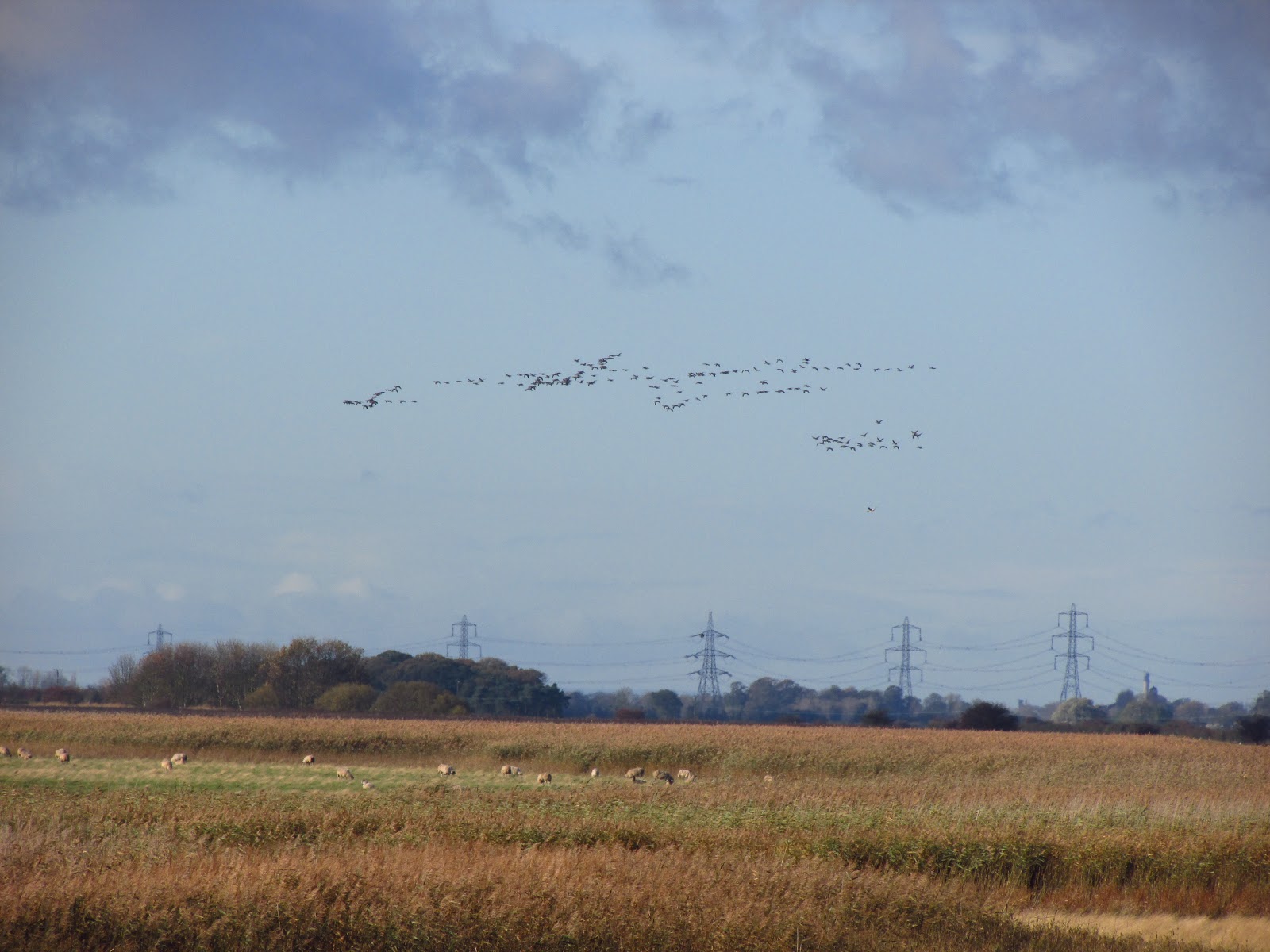A lovely morning at South Landing, sunny and low tide. As I arrived a flock of Meadow Pipits, with a few Rock Pipits and a Pied Wagtail, fed by the stream. In the beach, Oystercatchers, Curlew, Ringed Plovers, Cormorant, Herring Gulls, Turnstones and Redshank with a Bar-tailed Godwit. They mostly scattered as a dog walker threw a tennis ball towards the beach. I moved east to try and get a better angle, to photograph the waders and found a Male Kestrel sunbathing on the cliff. I watched the wading birds feed and the cormorant drying its wings, when I heard the Carrion Crow mobbing call behind me. A pale buzzard was being chased just over the cliff. Despite having read about the differences between Rough-Legged and the Common Buzzard, I couldn't remember any at the time, but it was an unusual buzzard, so I checked it carefully trying to memorise its features. Two stuck with me: its mostly white tail, with only the submarginal bar black, and the white wing leading edge. Before it disappeared behind the cliff I also managed a record shot.
There were three photographers east of the landing, pointing at the cliff with their cameras. They were after a couple of Black Redstarts, but there was no sign of them. A Wren foraged on the cliff, disappearing between the boulders and the crevices in the chalk, in the company of a Rock pipit.
I had a walk on the top cliff and wood. The only thing of notice was a Sparrowhawk, and a bounding Stoat, which stood on its rear legs to have a good look at me. Before I could change the camera settings, it disappeared into the long grass.
A running Meadow Pipit
Male Kestrel
Curlew with worm
Bar-tailed Godwit
Young Cormorant
Carrion Crow and the Rough-legged Buzzard
Rock Wren
and Rock Pipit
My favourite place in Yorkshire!
Another Rock pipit
Stoat (sorry for the poor quality but today it wasn't a good day for photos!)

































































